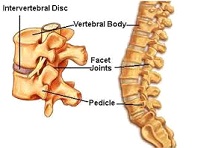Radiculopathy Symptoms, Causes, Diagnosis and Treatment

What Is Radiculopathy ?
Radiculopathy is known as a pinched spine nerve. It usually occurs when there is any deterioration or injury to surrounding tendons, muscle, cartilage, or bones. The trauma will leads to the changes in the position of tissues so that they produce extra pressure on roots of the nerve in the spinal cord.
When the roots of nerve are compressed, they become swollen or inflamed. This will results in pain, weakness and numbness. Usually, the condition can be upturned with appropriate and timely treatment.
What Are The Types Of Radiculopathy ?
There are three types of radiculopathy:
- Cervical Radiculopathy
- Thoracic Radiculopathy.
- Lumbar Radiculopathy
What Causes Radiculopathy ?
Whenever a nerve surrounded by a tissue is compressed, radiculopathy occurs. Sometimes, it is triggered by a spinal herniated disc when the outer border of the disc tears or weakens. Then nucleus pushes itself outward and produces pressure on an adjacent spinal nerve. Pressure raised from the surrounding tissue, herniated disc, tendons, or muscle can produce inflammation. This hinders the normal nerve functioning. Other factors include: Age, Poor posture or repetitive activities stress can cause compression too.
What Are The Symptoms Of Radiculopathy ?
Radiculopathy Symptoms include:
- An intense back pain that moves down to the foot.
- An Intense pain that gets worse with increased abdominal pressure from coughing or sitting.
- Skin numbness in the foot or leg.
- Tingling and weakness in the arm and neck.
- Reflexes loss.
- Tingling and weakness in the leg and back.
- Pain in shoulder.
- Hypersensitivity
- Pain in arm.
- Changes in sensation.
- Pain while moving head or neck.
How Is Radiculopathy Diagnosis ?
Numerous tests are conducted to diagnose or identify the cause of radiculopathy. An initial examination is done, such as:
- X-rays highlights bone alignment or disc narrowing.
- MRI (Magnetic resonance imaging) inspects the spinal cord, soft tissue, and nerve roots.
- CT (computed tomography) scan is done to explain the bones details, such as bone spurs.
- Electromyogram (EMG) is done to measure the electrical muscles impulses during rest as well as during movements or contractions. This will assist in finding the damage evidence.
- NCS (Nerve conduction study) also assist in measuring the capability of nerves to transmit electrical signals.
How Is Radiculopathy Treatment ?
Normally, in the treatment of radiculopathy, the first step is conservative management of the disease.
Medications
Several medications are efficient in treating the inflammation and pain of radiculopathy:
- Analgesics
- NSAIDs which includes naproxen and ibuprofen.
- Oral corticosteroids.
- Muscle relaxants.
- Opioids prescription for intense pain.
- Corticosteroid injections for the affected area.
Surgical treatment
Surgery is also used to get rid of the pressure from the affected nerve. This is achieved by a discectomy. In this procedure, herniated disc part or bone spurs are removed. And, a vertebrae section may require fusing or removing together.
Home Care
Avoid such activities that can aggravate the muscle pain. Usually, a brace, splint, or soft collar is prescribed by the physician to arrest the affected area. A patient can also learn from physical that how he can stretch, strengthen, and care for the affected area
By : Natural Health News




